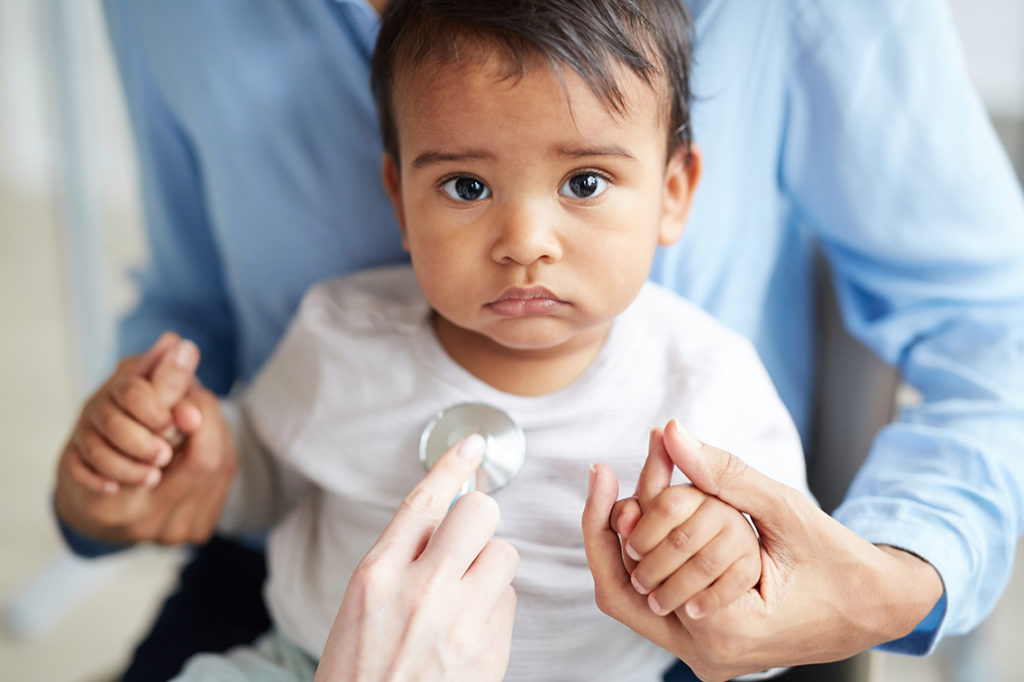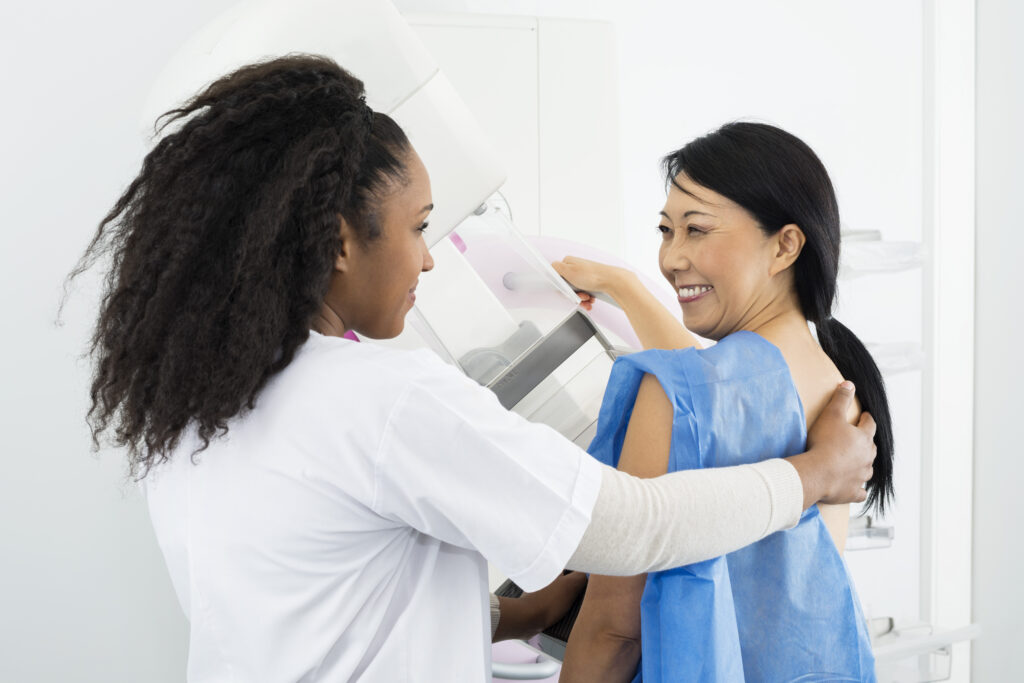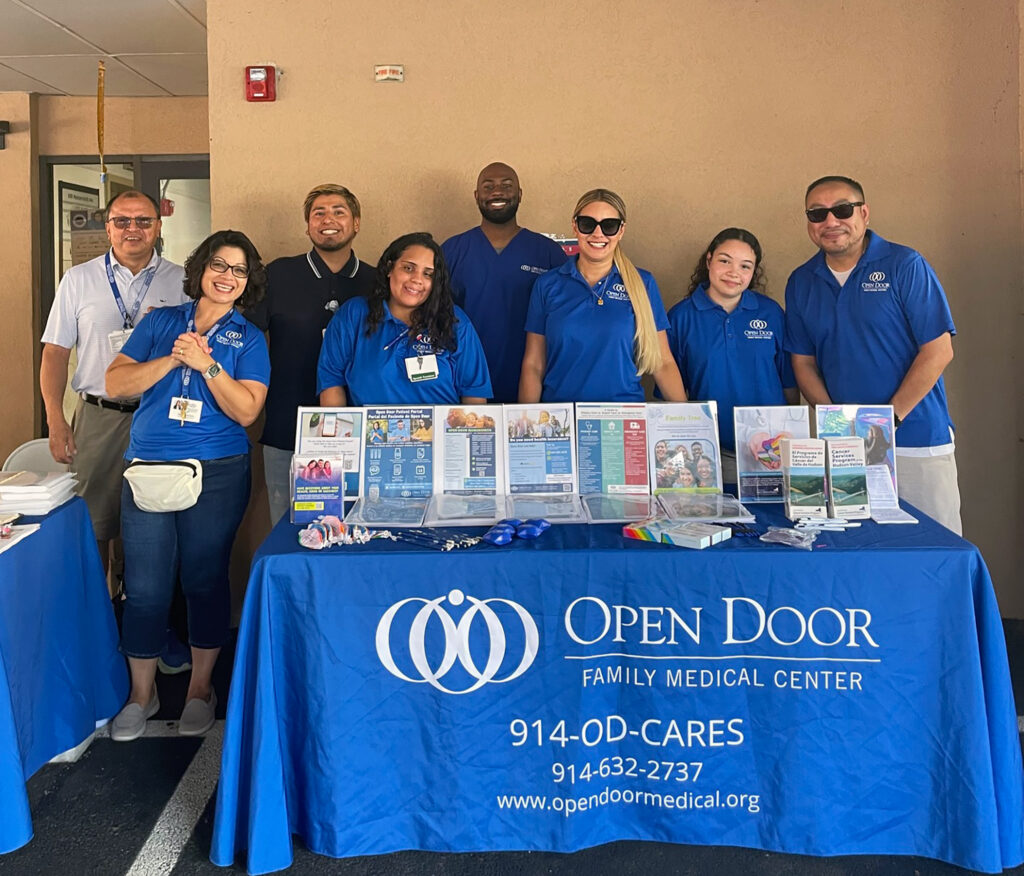Over the last 18 months, telehealth provided a critical bridge for patients hoping to connect with their doctors and yet avoid in-person visits to their providers’ offices for fear of exposure to COVID-19.
Open Door Family Medical Center pediatricians like Dr. Andrew Swiderski found connecting by telephone, through video or the exchange of photos, helpful in engaging the parents of his young patients. It was effective for such things as displaying rashes, discussing the reasons for getting children vaccinated against the virus, and giving tips on toilet training. When telehealth did not suffice, he met patients in the parking lot next to his Ossining Open Door office or under the awning of nearby retailers, creating meaningful connections and ensuring consistent medical care.
According to Dr. Swiderski, however, most parents now want to return to some degree of not only in-person schooling, but also in-person doctors’ visits. “While telehealth allows patients and their parents to connect with providers,” he says, “it does not replace regular screenings when vaccinations need to be given, milestones measured, or tests administered.”
Dr. Sharon Joseph, a pediatrician at Open Door’s Port Chester site, also believes that telehealth has a permanent place in patient care but cannot always take the place of face-to-face visits. “We can see on video if the belly button looks good or we can examine a rash,” she says. “But, when necessary, we tell people ‘you need to come in.’ ”
Permanent changes have been made at Open Door’s offices to isolate acute patients and emphasize infection control awareness, including hand washing, mask wearing and separate entrances for sick and well patients.
“Right now,” she adds, “pediatricians at Open Door and around the country are playing catch-up with patients. This means conducting a full court press in terms of going through our electronic medical records to identify and reach out to the many parents whose children, primarily preschoolers, fell behind schedule in seeing the doctor.”
Along with their colleagues across the country, they are also finding themselves bolstering many parents who have been overwhelmed during the past 18 months. “We’re seeing an uptick of parents coming in after hearing from teachers that their children couldn’t focus or lost skills – all natural consequences of the past school year,” observes Dr. Joseph. “With some of our families, first grade students are learning in English with parents who don’t know enough English to help them do their homework. The school year was so topsy turvey and parents feel it.”
Another major nationwide consequence of the pandemic has been the rise in childhood obesity, according to Dr. Joseph. “Many of our kids sat at home, bored and eating, and not exercising,” she says. “By not having in-person visits, they missed out on the preventive care offered by Open Door in terms of services such as access to nutritionists who can provide them with information about healthy and culturally appropriate meals. Among some of our families, they can’t just say to their kids ‘go out to the backyard and burn off steam.’ They may not have that option and their only exercise was walking to school or being in gym class, neither of which, for the most part, existed.”
The verdict is still out when it comes to deciding whether interventions such as talking with teens exhibiting high-risk behaviors can be solely done remotely. “A lot of people say it is too impersonal to do online,” says Dr. Swiderski, “but others say with a little more distance it can actually get people to open up more.”
“Virtual visits have huge potential around the country in places where medical resources are limited,” says Dr. Swiderski. “It makes more sense, in some cases, than traveling or needing to take time off from school or work. There are things we can do that we didn’t know we could, like diagnosing a rash over the phone or listening to a child snoring. But it doesn’t work when you talk about checking joints, ears, eyes, heart, and lungs. There are limitations.”
Pediatrics require more in-person visits than adult medicine. According to Dr. Swiderski, “You can’t weigh patients, measure vitals, do lab tests, or check their hearing remotely. Vaccinations, obviously, can only be given in-person. This all suffered during the height of the pandemic and many fell behind. I could do some annual checkups remotely, but patients would still have to come in at a later time.”
In-person visits are essential from birth to 18 months, and at four, 11 and 16 years old. Certain sick visits can be discussed through telehealth, but some respiratory conditions, such as asthma, are better monitored in-person.
In addition, virtual visits are challenging for many of his patients who lack the digital capabilities of more affluent families in terms of such things as bandwidth, internet access, screen size, and digital skills. “Some of our families don’t have laptops and it can be hard to send video from a 3 by 3-inch screen,” he says. To address these gaps, Open Door launched a digital literacy effort, including education to strengthen skills and access to laptops and Wi-Fi to increase access.
“There is a whole new world and a lot of progress has been made. We’re getting back to normal, but it’s certainly not the same. Pediatricians have learned a great deal about how to accommodate patients and their families,” says Dr. Swiderski, who adds that incorporating different modalities of care offers a broader range of access to services.




